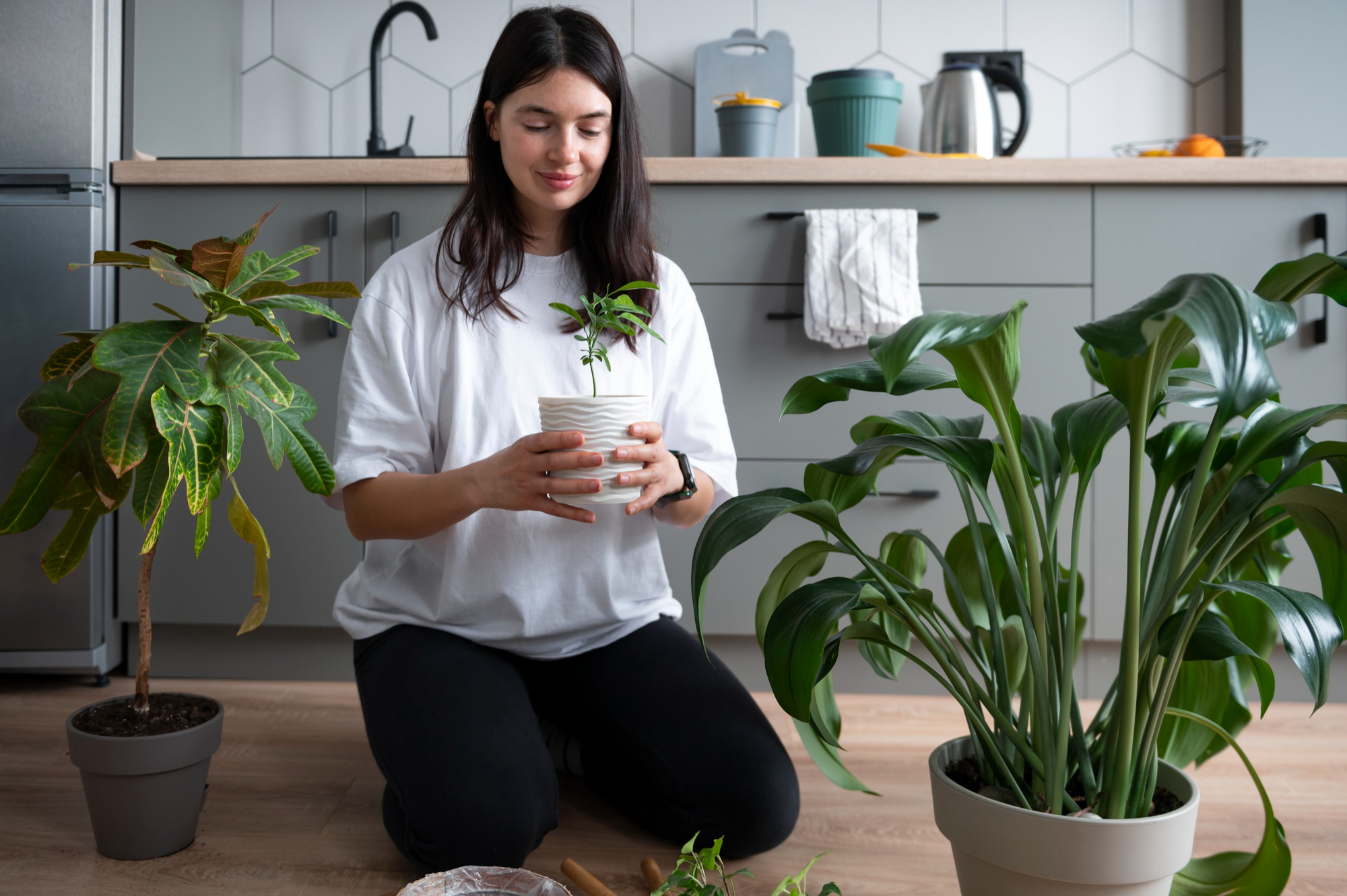In today’s world, where sustainability and eco-conscious living are becoming increasingly important, growing your own moringa tree at home is a fantastic way to contribute to green living while reaping the benefits of this incredible superfood. We’re excited to guide you through the process of cultivating and caring for your moringa plant right in your backyard.
Introduction: Embracing Moringa and Green Living
Welcome to the World of Moringa
Moringa, often referred to as the “drumstick tree” or “miracle tree,” has gained widespread popularity for its remarkable nutritional value. It’s packed with essential nutrients, making it a valuable addition to any eco-conscious individual’s garden. Many gardeners seeking to cultivate moringa in their green spaces turn to Moringa seeds suppliers in India to kickstart this nutritious journey.
The Green Living Movement
Green living is more than just a trend; it’s a lifestyle that emphasizes sustainability, reducing our environmental footprint, and promoting health and wellness. Cultivating moringa at home aligns perfectly with these principles.
Getting Started with Moringa: A Step-by-Step Guide
1. Choosing the Right Location
Select a sunny spot in your garden for planting your moringa tree. Moringa thrives in full sunlight, so ensure it gets at least 6 hours of sun per day.
2. Preparing the Soil
Moringa trees aren’t too picky about soil type, but they do best in well-draining soil. Incorporate organic matter like compost to improve soil fertility.
3. Planting Moringa Seeds
Plant moringa seeds about an inch deep in the soil. Water them gently and keep the soil consistently moist until the seedlings emerge.
4. Providing Adequate Spacing
Space your moringa plants at least 10 feet apart to allow them room to grow and spread their branches.
5. Watering and Maintenance
Moringa trees are relatively drought-resistant once established. Water them regularly in the early stages, but be cautious not to overwater.
6. Harvesting Moringa Leaves
You can start harvesting moringa leaves when the tree is about 3-4 feet tall. Use clean, sharp scissors to snip off the leaves, which will encourage further growth.
7. Enjoying Moringa’s Benefits
Incorporate fresh moringa leaves into your daily meals by adding them to salads, smoothies, or as a side dish. Alternatively, dry the leaves to make moringa powder for long-term use.
Embrace Green Living with Moringa
Reduce Your Carbon Footprint
Growing your moringa tree at home contributes to reducing your carbon footprint. When you produce your food, you eliminate the need for transportation and reduce greenhouse gas emissions associated with food miles.
Promote Biodiversity
Moringa trees attract beneficial insects and pollinators, promoting biodiversity in your garden. Bees, butterflies, and other insects are essential for a healthy ecosystem.
Minimize Food Waste
With a moringa tree in your backyard, you can harvest leaves, pods, and flowers as needed, minimizing food waste. Freshly picked moringa is more nutritious and flavorful than store-bought alternatives.
Support Sustainable Agriculture
By growing moringa and other edible plants at home, you’re actively participating in sustainable agriculture. You reduce the demand for commercially grown produce, which often involves the use of pesticides and chemical fertilizers.
Share the Green Living Journey
Encourage your friends and neighbors to join you on your green living journey. Share your surplus moringa leaves and seeds with them, spreading the benefits of this remarkable tree and the principles of sustainability.
The Many Benefits of Moringa
Nutrient Powerhouse
Moringa leaves are incredibly nutritious, containing high levels of essential vitamins and minerals. They are particularly rich in vitamin C, vitamin A, calcium, potassium, and iron. Incorporating moringa into your diet can help boost your overall health and immunity.
Antioxidant Properties
Moringa is known for its potent antioxidant properties. Antioxidants help combat harmful free radicals in the body, reducing oxidative stress and lowering the risk of chronic diseases.
Energy Booster
The vitamins and minerals in moringa leaves provide a natural energy boost. Adding moringa to your daily routine can help fight fatigue and keep you feeling energized throughout the day.
Supports Digestive Health
Moringa is also a great source of dietary fiber, which aids in digestion and promotes a healthy gut. It can help alleviate digestive issues such as constipation and bloating.
Skin and Hair Care
The benefits of moringa aren’t limited to internal health. Moringa oil, extracted from the seeds, is used in various cosmetic products. It’s known for its moisturizing and anti-aging properties, making it a popular choice for skincare and haircare.
Creative Uses for Moringa
Moringa Tea
Enjoy the goodness of moringa in a warm cup of tea. Simply steep moringa leaves or moringa tea bags in hot water for a soothing and nutritious beverage.
Moringa Smoothies
Boost your morning smoothie with a handful of fresh moringa leaves. It adds a mild, earthy flavor and a nutrient-packed punch.
Moringa Pesto
Replace basil with moringa leaves in your pesto recipe for a unique and healthy twist. Moringa pesto pairs perfectly with pasta, salads, or as a dip.
Moringa Face Masks
Create your own all-natural face mask by mixing moringa powder with yogurt or honey. Apply it to your skin for a rejuvenating and cleansing experience.
Moringa Hair Serum
Add a few drops of moringa oil to your regular hair conditioner for extra nourishment and shine. It helps strengthen hair and prevent breakage.
Join the Green Living Movement
By growing moringa at home and incorporating it into your daily life, you’re not only reaping the benefits of this remarkable plant but also contributing to the green living movement. Embracing sustainable practices and making eco-conscious choices in your daily routines can have a positive impact on the environment.
We’re committed to providing you with valuable information and resources to support your green living journey. We believe that small changes in our lifestyles can collectively lead to a more sustainable and healthier planet for generations to come.
Conclusion: A Greener, Healthier Tomorrow
Cultivating moringa at home isn’t just about growing a tree; it’s a step toward embracing green living and enhancing your well-being. By following our step-by-step guide, you can enjoy the numerous benefits of moringa while contributing to a more sustainable future.
We’re dedicated to providing you with valuable insights and practical guidance on green living, nutrition, and sustainable practices. Start your moringa journey today, and join us in creating a greener, healthier tomorrow.
Frequently Asked Questions (FAQs)
Q: Can I grow moringa indoors?
A: While moringa prefers outdoor conditions, you can grow it indoors in large pots if you provide sufficient sunlight and space.
Q: Is moringa easy to maintain?
A: Yes, moringa is relatively low-maintenance once established. Regular pruning and proper watering are key to a healthy tree.
Q: How long does it take for moringa to grow?
A: Moringa grows rapidly, and you can start harvesting leaves within 6-8 months of planting.
Q: Are there any pests or diseases to watch out for?
A: Moringa trees are generally resistant to pests and diseases, making them an excellent choice for home cultivation.
Q: Can I use moringa for more than just leaves?
A: Absolutely! Moringa’s seeds, flowers, and even roots are edible and offer various health benefits.
Q: What makes moringa a “superfood”?
A: Moringa is packed with vitamins, minerals, and antioxidants, making it a nutritional powerhouse.





